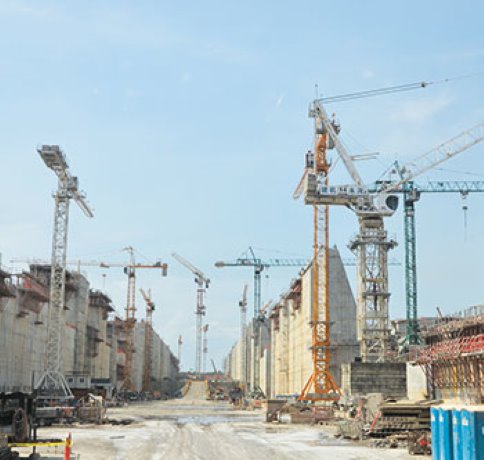The $5.2 billion expansion of the Panama Canal is a massive construction and engineering initiative whose success is being measured beyond the new channel and locks being built, says a top project official.
“The canal has to be a model,” said John Langman, Panama Canal Expansion project management division executive manager.
“We are trying to be professional in awarding contracts. We have tried to be very transparent on the progress of the project and we also have to be very sensitive socially, environmentally and also historically.”
The complex project is the largest infrastructure project ever undertaken in Panama, since the building of the current canal 100 years ago.
Langman provided an update on the project to the Canadian Construction Association at its 96th annual conference in Panama City, Panama.
The expansion of the canal will double its capacity and allow more maritime traffic through this world renowned transit marvel, which links the Atlantic and Pacific oceans.
The project consists of a new, third set of locks, a Pacific Ocean access channel, the improvement of navigational channels through dredging and improvements to water supply.
As of Jan. 31, the dredging of the Atlantic and Pacific entrances was complete, the Gatun Lake and Culebra Cut dredging was 85 per cent complete, the Pacific access channel completion rate sat at 82 per cent, the design and construction of the third set of locks was 67 per cent done and the raising of Gatun’s Lake maximum operating level was at 66 per cent completion.
Gatun Lake (a large artificial lake) is a key link in the Panama Canal chain which carries ships for 33 km of their 77.1 km journey through this major maritime thoroughfare.
The three million cubic metres of concrete poured to date during the expansion has been impressive and a “huge endeavour for us,” said Langman.
He added that equal amounts of care and diligence has gone into ensuring less water is used and it’s used more efficiently during the transit of ships, when the newest lane is opened.
One of the measures is to reuse 60 per cent of the water in each transit through new water-saving basins in the locks.
This new system will use seven per cent less water, although it is bigger than the current locks, he explained.
“We are also using most of the existing land and water (in the construction) of the new channel,” added Langman.
Included in this current land use is reforestation in which twice as much forest has been replanted compared to what has been removed to allow construction of the expansion project.
More than 100 studies during six years of research have provided a vital backbone for the Panama Canal expansion.
Expansion work began September 2007 after the contract for the design and construction of the new locks was awarded to the consortium of Grupo Unidos por el Canal (GUPC) which consists of Sacyr Vallehermoso, S.A (Spain), Impregilo, S.p.A. (Italy), Jan de Nul Group (Belgium) and Constructora Urbana S.A. (CUSA) (Panama).
The contract for the design and construction of the new locks was awarded as a result of a prequalification and a bidding process that lasted 14 months.
The Panama Canal Authority (APC) reported that about 30 major engineering and construction companies from around the world participated in the process.
In late December 2013 and early January of this year, GUPC announced suspension of work on the Panama Canal expansion over an alleged $1.6 billion in cost overruns.
On Feb. 27 (APC) announced that a “conceptual agreement” had been reached, which fell under the terms of the original contract and did not include any payment for claims.
Among the conditions of the conceptual agreement were that 12 lock gates, made in Italy, must be in Panama by December 2014 and must be shipped in staggered stages. Also, the GUPC will pay US$100 million and the ACP will advance US$100 million to allow expansion work to regain its stride in March, and that the expansion construction be completed by December 2015.
For more stories and videos from the CCA’s 96th annual conference in Panama, visit www.journalofcommerce.com or follow @JOC_Canada on Twitter and the hashtag #CCA96th.




Recent Comments
comments for this post are closed